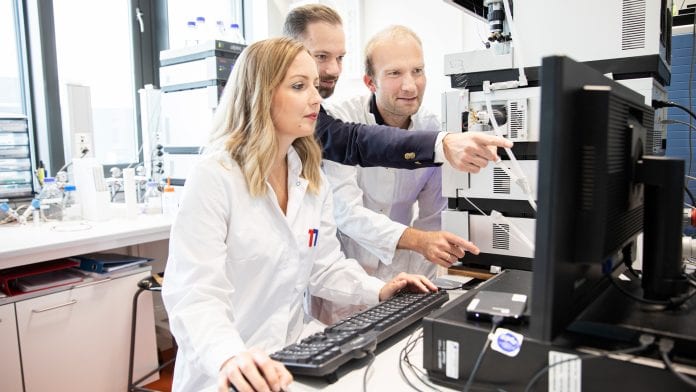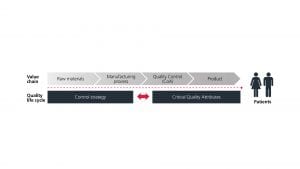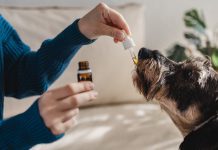
MCN speaks to independent consulting firm NNE about how quality control, testing, and analysis in medical cannabis production can benefit patients.
Independent consultancy NNE operates a dedicated division aimed at helping cannabis-focused clients around the world all the way from their initial business concept, through the investment process, to establishing a production facility. All these aspects of a company, Business Director Christian Carlsen explains, are built around enshrining high standards of quality control throughout the value chain.
“We take a lot of our knowhow from the perspective of Big Pharma, but we have adapted those experiences – the cannabis industry as we know it is a very young, emerging industry; and there are not yet the diverse, well-developed procedures and guidelines in place which you would find in the pharmaceutical sector. This means that sometimes, when developing standards or guidance, we have to search outside the cannabis industry.”
Principal Consultant Morten Allesoe adds: “It’s OK to draw inspiration from the traditional pharmaceutical industry; we just also have to remain aware of that medical cannabis is still not wholly considered to be a medicine in the traditional sense: we have to be cautious not to just replicate everything we’ve learned from traditional pharma in the cannabis sector.”
One issue which NNE must take into account when assessing the value and supply chains of cannabis producers is the relative simplicity of the cannabis industry’s value chains, in comparison to those of the traditional pharmaceutical sector: lessons learned from the complex, intricate supply chain systems and standards of pharma must be streamlined or simplified to some degree before they can be entirely applicable to cannabis.
“We have been working on this for about two years now and we have reached a very good level in this respect,” says Carlsen.
Quality control for patient wellbeing
NNE’s key priority remains the welfare of patients and the companies which serve patients by manufacturing and producing cannabis-based medical products.
Allesoe notes: “Whether you are in the field of traditional pharma or medical cannabis, everything must revolve around the patient’s needs and potential benefits. The market that is driven by unmet patient needs – once you identify an unmet need, you can start defining your product; and then you need certain quality criteria to be set for the product to offer the greatest efficacy and safety for the patient. This is what critical quality attributes (CQAs) are all about: these are some of the things that you should start considering quite early on, which is not always what we have seen in practice. NNE always tries to encourage customers to think through their CQAs early on in their product life cycle, once they start to define their product.”
Critical quality attributes are the metrics by which a product can be gauged in terms of the efficacy, quality or safety standards it meets: in the case of cannabis flower, for example, CQAs for the product could include the concentration of cannabinoids in the product or the levels of pesticide which it is permitted to contain. NNE has observed that most final products usually meet six or more CQAs which have been determined to be critical to the patient.
Allesoe says: “Within the value chain and the overall production control strategy, CQAs are really at the heart of everything. You can build everything up around ensuring CQAs which meet your own specifications and regulatory requirements; you design and build your facility; you have raw materials going in; you have a full manufacturing chain – but in the end, you must be able to make a product which meets the correct CQAs. This is something which you must formalise in a control strategy: when you want your product to be launched on the market, you file documentation with the relevant authorities describing the controls and procedures in your facility, including the settings of the different equipment you use, in order to produce a product that falls within CQA specifications. Whether the quality control (QC) laboratory is internal or external, its function is extremely critical; because the quality control process can confirm whether a control strategy has been sufficient during batch production.”
NNE views quality control laboratories as an integral part of the value chain, because QC analysts produce the certificate of analysis (CoA) containing the results of all the CQAs they have tested. In effect, the CoA is the make or break document – Allesoe calls it the ‘golden paper’ – which determines the overarching quality of a particular batch.

Meeting challenges
What happens, then, if something goes wrong? What happens if the QC methods perform poorly, or the procedures are flawed? Allesoe explains: “Let’s say for instance the analysts measuring your CQAs claim that everything is all right, but they are not properly qualified to measure or analyse the product. What happens then is that you end up sending a bad quality product to the patients when in fact it should have been discarded – but your CoA and your QC lab tell you that it is acceptable, because of unclear procedures or poor QC methods in your laboratory. What happens then, in the final stage, is that you send the wrong product to market.
“The absolute worst case scenario that can happen is that you actively harm the patient. Fatalities are quite extreme and very rare in terms of cannabis products – we know that THC and CBD in general are regarded as safe – but just imagine what can happen if the patient expects to get, for instance, a high CBD product and instead they receive a high THC product because the producer has mixed up their samples. These products will have a very different effect to that which is promised on the label; and so the patient experience can be compromised.”
Not only is poor quality control dangerous to patients and consumers, it can put the reputation of a company at risk: if a patient has been harmed by a product, the entire batch will need to be recalled and a full investigation launched into the root cause. Meanwhile if an official complaint is launched, the company may be subject to further investigation and potential sanctions issued by governing authorities, from fines to the withdrawal of a business’s licence. “You can have a bad control strategy, in principle; that can happen if a business has a flawed process and then expands too fast to keep up,” says Allesoe. “But as long as you have a good QC lab, then your QC lab is effectively the final checkpoint on quality standards. However, if your quality control doesn’t work, then poor quality products will ultimately reach the patient.”
In addition to the risk of releasing poor quality or insufficiently verified products into the market, the implementation of inadequate quality control procedures or unqualified QC analysts may result in the rejection of a perfectly good product even if it meets all the requisite specifications. While this type of error is essentially harmless from a patient perspective, the waste of time and resources it causes risk damaging the business in terms of revenue.
Carlsen summarises: “The control strategy is the process of building a robust value chain; and the QC function represents the verification of that strategy at the final stage before the product is released.”
An emerging industry
Many of NNE’s Nordic and European clients are relatively new businesses with few products on the market to date: this, in conjunction with the fact that medical cannabis is a young industry, means that the control strategies and quality control processes of many cannabis producers have yet to be effectively assessed. In addition to the company’s work with private sector clients, NNE has developed a dialogue with policymakers and authority bodies, many of whom are also relatively new to the cannabis industry, in order to assist them in overseeing and regulating the manufacture and trade of cannabis.
Allesoe notes: “Many of the analyses from the CoAs are brought in from traditional pharma: in Denmark particularly, we rely heavily on the European pharmacopoeia [the official publication listing the effects and applications of medicinal compounds]; and this works very well for traditional pharmaceutical product types, but in the case of cannabis, because it’s so new, we have found a lot of aspects of cannabis-specific quality control testing have not typically been covered within the sector. As a result, the Danish authorities have worked to update the documentation which QC analysts can draw from – Germany has worked quite fast to develop and update its pharmacopoeia to take cannabis into account, but there are still some gaps, in particular in guidance on testing cannabis products.”
As cannabis is a herbal plant-derived product, testing is rendered significantly more complex by the lack of homogeneity between crops – and even between different growth cycles of the same plant, which may be affected by any number of external factors, including temperature, humidity, soil quality, pests and pest control. The samples extracted from a plant for quality control testing may therefore not be entirely representative of the batch as a whole. This is a common challenge faced by cannabis growers and producers: NNE advises its clients to mitigate the issue by examining in depth how homogenous their product is, and by extension to what degree testing protocols should be expanded based on statistical analyses.
Regulation and standardisation
“In terms of the regulatory framework, there is basically no harmonisation in Europe,” says Carlsen. “In the absence of a harmonised, Europe-wide set of guidelines, if a company that manufactures cannabis products in Denmark wants to have their products tested, they can have the tests conducted in Denmark to meet Danish standards – but if the same manufacturer were to send their product for analysis in Holland or Germany, for example, there may be a differing set of standards. Then if a company produces a CoA stating its product has been tested according to the local requirements in a different country, it may not be permitted to release its product onto the Danish market, because of this lack of harmonisation: a lot of investigation is necessary to make sure that the correct requirements are met for the country in which you want to sell your product.”
Allesoe highlights the issue of pesticide regulation as an example. “There can be very different requirements for how many and which types of pesticides can be used in plant production, depending on where you are – in the US, it even varies from state to state. Pesticide control is one of the CQAs that we really see some clients struggling with: at the very least, producers must be well aware of the local requirements and restrictions.”
The role of the pharmacopoeia in quality control
A pharmacopoeia is essentially a comprehensive guideline, containing testing and storage conditions; the makeup of various compounds, directions for use; recommended dosage forms and amounts; guidelines for assessing the uniformity of a dosage; and other key medicinal specifications. Traditionally pharmacopoeias were published as large books, but now they are predominantly issued online.
Regulatory requirements indicate that any novel testing method must be confirmed to be accurate, precise, and robust. Some methods of testing and analysing cannabis, however, are still not featured in the pharmacopoeias; where this is the case these methods must be fully validated.
Allesoe adds: “It is essential to demonstrate that you are aware of the limits of detection and quantification in your testing protocols, because if you don’t know the limits of your assessment, then you may end up measuring a cannabis product outside the limit of detection or the limit of quantification – and this is where you start to get bad results. This is something that people should take very seriously.”
Quality systems for quality control
Even quality control needs quality control, says Allesoe: “Typically you would think about quality systems within the context of production or an entire facility, but a quality system is just as necessary within a QC lab. It describes the procedures which ensure samples are not mixed up; guidelines on workflows; risk analysis for data transfer and storage. Things can go very wrong in a quality control system; and if things go wrong then you start to get invalid results. A well disciplined quality manual is important for manufacturers and laboratories, and it’s essential for the operation as a whole.”
Local and regional restrictions may apply to quality systems testing: some localised guidelines, whether issued by governing bodies or stated in the regional pharmacopoeia, identify specific techniques which must be used in a certain testing process. Allesoe, who has a background as an analytical chemist, emphasises: “You cannot just use any method and assume that it will work as a basis for the CoA.”
The quality control value chain relies necessarily on representative sampling. Allesoe identifies this as a collaborative process between the manufacturing side in charge of making the product and the quality control side analysing it: both sides must understand each other’s needs and limitations to ensure that the samples received by the QC lab can be optimally representative of the entire batch.
“If you have a final product but you are aware that there is a lack of homogeneity in your process, then you still need to keep the batch strictly chronologically controlled once it has been packaged; then the chemist would extract samples to be sent to QC analysis. It’s not the QC laboratory itself which collects the samples; that is done on the manufacturing side. If the manufacturing department has a flawed sampling strategy, there is nothing that can be done about it at the QC level; they can only enact change in the way they prepare or store samples and factors like that,” says Allesoe.
The control strategy
All the components of the control system – testing methods, analysis types, representative sampling – are directed towards the ultimate goal of quality control: generating a valid certificate of analysis, which accurately represents the quality and efficacy standards of the final product; and in doing so, confirms the control strategy. “The control strategy is the glue that holds the entire process together,” Allesoe explains. “The manufacturing side, the QC lab, and in the end the patients, are all held together by the overarching control strategy: essentially, it is the umbrella over everything
“Some people think it’s only related to process parameters, but it is so much more: it’s the settings of the process equipment; defining the necessary operating ranges in order to meet specifications of your CQAs; GMP controls such as standard operating procedures and training of personnel. If the procedures themselves are not easy to understand, then the process will fail entirely, or the end product will be outside specifications. The control strategy also sets standards for the facility: humidity, temperature and so on. When you file your product with the authorities, you must clearly define your control strategy – if effectively communicated, via for example the quality risk management system, it can act as a holistic overview of the entire production process.”
Acknowledgements
NNE would like to thank researchers of University of Copenhagen for discussions on cannabinoid method optimization: PhD researcher Heidi Öblom, Associate Professor Claus Cornett and Professor Jukka Rantanen
Christian Carlsen
Business Director
Morten Allesoe, PhD Pharm
Principal Consultant
+45 4444 7777
czca@nne.com
Tweet @NNEglobal
www.nne.com
This article is for issue 3 of Medical Cannabis Network. Click here to get your free subscription today.







